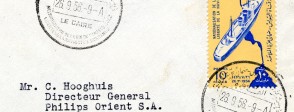Egypt and the Nile valley have been of pivotal importance in world history for millennia. Egypt’s location on the Mediterranean and the borders of the Red Sea means it is a key point of intersection between Europe, Africa and Asia.
Fragment of painted plaster; about 1400 BC
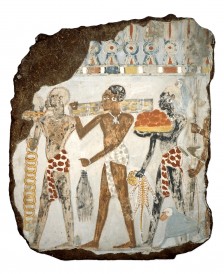
Ancient Egypt is regarded as one of the great civilisations of the ancient world. The is one of several wall paintings from a tomb showing people from different lands bringing luxury items of tribute to Sebekhotep, a senior treasury official, and shows the relationship of Egypt with neighbouring regions.
See more See more: https://www.google.com/culturalinstitute/beta/asset/fragment-of-painted-plaster-from-the-tomb-of-sebekhotep/jgG7t1jcKwybqwRoman-Egyptian portrait; about AD 160-170
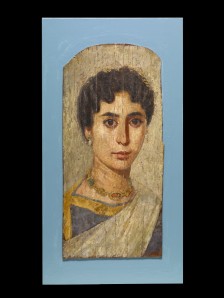
This painting of a woman, from a mummy, dates from the period when Egypt was a province of the Roman Empire. The Egyptian elite was Romanised as demonstrated by the woman’s clothing and hair. The pearls she wears are likely to have come from the Persian Gulf via the Red Sea. Precious stones from South Asia, such as sapphires and garnets, were popular amongst the Romans and were all transported through the so-called ‘Indo-Roman’ trade.
See more See more: http://www.britishmuseum.org/research/collection_online/collection_object_details.aspx?assetId=594697&objectId=152631&partId=1Mosque lamp; AD 1350 – 1355
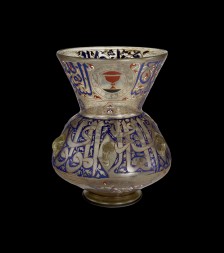
After the spread of Islam, much of the Middle East including Egypt was ruled by Muslim rulers. The Fatimid Caliphs moved their capital to Cairo in the 12th century AD and it later became the capital of the Mamluk empire, which covered most of the Near East and the Red Sea coast of the Arab peninsula. This mosque lamp dates from the Mamluk period in Cairo, an era of great cultural and architectural achievement.
See more See more: http://www.britishmuseum.org/research/collection_online/collection_object_details.aspx?objectId=245520&partId=1The Rosetta Stone; 196 BC
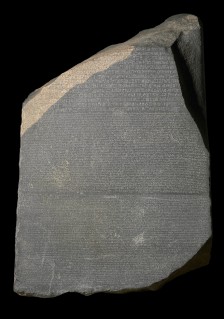
Although the Rosetta Stone dates from the ancient Egyptian period, its history also tells us about European attempts to dominate Europe in the late 18th and early 19th century. The stone was passed from the French to the British after the defeat of Napoleon. For fuller discussion, follow the History of the World link to listen to the radio programme or read the transcript.
See more See more: https://www.google.com/culturalinstitute/beta/asset/the-rosetta-stone/DgH6pMM1guUUPAPostcard of the Suez Canal; AD 1920s
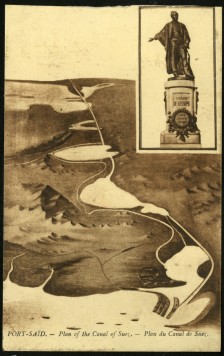
This postcard shows a topographical image of the canal and an image of the statue of Ferdinand de Lesseps, the French diplomat whose intervention was critical in its creation.
See more See more: http://www.britishmuseum.org/research/collection_online/collection_object_details.aspx?objectId=3166675&partId=1&searchText=suez+canal&images=on&page=1The Flag by Mohammed Abla; AD 2011

This painting is a response to the revolution in Egypt, part of the so-called Arab Spring when, inspired by earlier events in Tunisia, popular uprisings occurred in countries across the region. In the 21st century, Egypt continues to be of pivotal importance in the politics of the Middle East.
See more See more: http://www.britishmuseum.org/research/collection_online/collection_object_details.aspx?objectId=3483929&partId=1&people=17375&page=1

